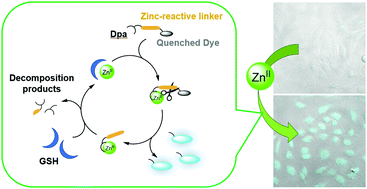A fluorogenic probe using a catalytic reaction for the detection of trace intracellular zinc†
Abstract
Labile zinc plays various roles in cells at low concentrations which most fluorescent probes are not able to detect. Here we report a cephem-based probe which coordinates to zinc and zinc-bound water cleaves the scaffold and releases the fluorophore. In addition, the zinc is recycled and reacts with multiple probes, amplifying the signal. This signal amplification system is useful for the detection of intracellular zinc at low concentrations and has potential for further development of probes with a similar molecular design.



 Please wait while we load your content...
Please wait while we load your content...